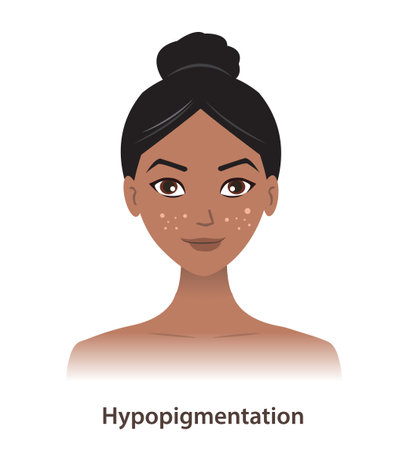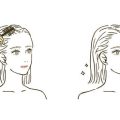Introduction to Hair Dyes in the UK
Hair dyeing has become an integral part of British beauty culture, reflecting both personal expression and evolving fashion trends. From the classic blondes of London’s high streets to bold, vibrant hues seen at music festivals like Glastonbury, colouring one’s hair is as much about individuality as it is about keeping up with the latest styles. In the UK, hair dye is not limited to a single age group or gender; it’s embraced by everyone from students experimenting with vivid colours to professionals seeking natural-looking enhancements. The cultural significance of hair dyeing is deep-rooted, influenced by iconic British figures in music and film who have set global trends over the decades. Below is a snapshot of current hair dye trends and attitudes among UK consumers:
Trend |
Description |
Popularity |
|---|---|---|
| Natural Shades | Subtle browns, blondes, and auburns for a polished yet understated look | High among professionals and older adults |
| Vivid Colours | Pinks, blues, greens—often inspired by pop culture and social media | Popular with younger generations and festival-goers |
| Balayage & Ombre | Hand-painted highlights for a sun-kissed effect | Consistently trending across all age groups |
| Grey/Silver Tones | From embracing natural greys to intentional silver dyes for a modern twist | Growing trend with both younger and mature consumers |
| Eco-Friendly Options | Demand for vegan and ammonia-free dyes reflecting environmental awareness | Increasingly important for health-conscious buyers |
The UK’s approach to hair colour is both diverse and dynamic, reflecting broader shifts in fashion, sustainability, and self-expression. Whether it’s a subtle refresh or a bold statement, hair dyeing continues to hold a special place in British culture.
2. Types of Hair Dyes and Their Differences
When it comes to choosing the right hair dye, understanding the differences between permanent, semi-permanent, and temporary dyes is essential for British consumers seeking both style and safety. Each type serves different needs, from subtle enhancement to bold transformation, and is offered by popular UK brands readily available on the high street or online.
Permanent Hair Dyes
Permanent hair dyes are designed for those seeking long-lasting colour with full grey coverage. These dyes work by opening the hair cuticle and allowing colour molecules to penetrate deep into the cortex, resulting in vibrant shades that don’t wash out easily. British favourites such as L’Oréal Paris Excellence Crème and Clairol Nice’n Easy Permanent are well-known for their reliability and broad shade ranges, often enhanced with conditioning agents to minimise damage. It’s important to note that permanent dyes typically contain ammonia and peroxide, which help lift your natural pigment before depositing new colour.
Semi-Permanent Hair Dyes
Semi-permanent dyes offer a gentler approach, ideal for those who wish to experiment without a lasting commitment. These products coat the hair shaft rather than penetrating deeply, allowing colour to fade gradually over several washes (typically 6-12). Popular among trend-conscious Brits are brands like Bleach London—famed for its pastel hues—and Superdrug Colour Sensations, which provide an accessible entry point for at-home colouring. Semi-permanent formulas are generally free from ammonia and require no developer, making them a less damaging option.
Temporary Hair Dyes
Perfect for special occasions, festivals, or those testing out a new shade, temporary hair dyes sit on the surface of the hair and wash out with one shampoo. Options like L’Oréal Colorista Spray or COSMO Temporary Hair Chalks are popular choices in the UK for their fun colours and easy application. Temporary dyes are also a go-to for parents looking for safe ways to let kids join in on colourful trends without long-term effects.
At-a-Glance Comparison Table
| Type | Longevity | Main Ingredients | Key UK Brands/Products |
|---|---|---|---|
| Permanent | Up to 8 weeks+ | Ammonia, Peroxide | L’Oréal Paris Excellence Crème, Clairol Nice’n Easy Permanent |
| Semi-Permanent | 6–12 washes | No Ammonia, No Peroxide | Bleach London, Superdrug Colour Sensations |
| Temporary | 1 wash | No Ammonia or Peroxide; Surface Pigments | L’Oréal Colorista Spray, COSMO Temporary Hair Chalks |
This breakdown helps UK consumers make informed choices based on their desired results, lifestyle considerations, and sensitivity to ingredients commonly found in each type of dye.

3. The Science Behind Hair Colouring
Hair colouring is a fascinating blend of chemistry and artistry that transforms not only your look, but also the very structure of your hair. To truly understand what happens during a colouring session at your local salon or at home, it’s important to break down the core components involved in the process. Here’s an accessible overview tailored for UK consumers.
The Chemistry of Hair Dyes
At the heart of every hair dye are three key elements: ammonia, peroxide, and colour molecules. Each plays a distinct role in achieving that perfect shade.
| Component | Main Function | Impact on Hair |
|---|---|---|
| Ammonia | Opens up the hair cuticle to allow colour to penetrate | May cause dryness if overused; crucial for lasting results |
| Peroxide (Developer) | Lightens natural hair pigment; activates colour molecules | Enables dramatic colour changes, but can weaken hair bonds over time |
| Colour Molecules | Deposit new colour within the hair shaft | Responsible for final hue; smaller molecules create permanent colour, larger ones are used in semi-permanent dyes |
The Step-by-Step Process
When you apply a permanent hair dye, ammonia lifts the protective outer layer of your hair (the cuticle). This allows peroxide to enter and interact with your natural melanin, effectively lightening it. At the same time, new colour molecules are deposited deep into the hair shaft, where they bond to create a long-lasting effect. Semi-permanent and demi-permanent dyes use gentler formulas, often skipping ammonia and using lower levels of peroxide or alternative chemicals.
Cultural Note: Why This Matters in the UK
With Britain’s diverse population and love for bold self-expression—from vibrant festival shades in London to natural balayage trends in Manchester—knowing how these chemicals interact with different hair types is essential. Understanding the science behind hair dyes empowers you to make informed choices about products and aftercare, ensuring healthy, gorgeous results every time you refresh your look.
4. Safety and Regulation: What UK Consumers Should Know
When it comes to hair dyes, safety and regulation are paramount for UK consumers who want both fabulous results and peace of mind. The UK has specific standards and regulations in place to protect users, whether they opt for a professional salon treatment or a DIY home dyeing session. Understanding these rules is essential for making informed choices and minimising risks associated with hair colourants.
Understanding UK Hair Dye Regulations
All hair dye products sold in the UK must comply with strict guidelines set by the UK Cosmetic Products Regulation, which aligns closely with the EU Cosmetics Regulation (EC) No 1223/2009. These laws ensure that only approved ingredients are used, limiting substances known to cause severe allergies or health concerns. Manufacturers are required to conduct rigorous safety assessments before their products reach store shelves.
Key Regulatory Points for UK Hair Dyes
| Regulatory Focus | What It Means for Consumers |
|---|---|
| Ingredient Approval | Only safe, pre-approved chemicals can be included in hair dyes. Look for ingredient lists and allergy warnings on packaging. |
| Labelling Requirements | Products must display clear instructions, allergy advice, batch numbers, and expiry dates to ensure consumer safety. |
| Patching Protocols | Manufacturers advise patch tests 48 hours before use to reduce the risk of allergic reactions, especially with PPD (para-phenylenediamine). |
| Professional Use Guidelines | Salons must follow additional protocols, including client consultations and record-keeping, to adhere to health and safety standards. |
Tips for Safe Hair Dye Use at Home or Salon
- Always read and follow instructions: Whether at home or in a salon, never skip the guidance provided on packaging or by your stylist.
- Conduct a patch test: Even if you’ve dyed your hair before, sensitivities can develop over time. Test each new product at least 48 hours before application.
- Avoid using expired products: Check expiry dates as expired chemicals may irritate the scalp or deliver unpredictable results.
- Protect your skin and clothing: Wear gloves and use old towels to prevent staining and skin irritation during application.
- If uncertain, consult a professional: For significant colour changes or when using bleach, seek advice from a qualified UK stylist who understands local regulations and best practices.
The Bottom Line for UK Shoppers
Navigating the world of hair dyes safely means being aware of local regulations, understanding ingredient labels, and practising recommended safety measures. By staying informed and cautious—whether colouring at home or in a salon—you can enjoy vibrant colour while protecting your health and well-being.
5. Understanding Hair Dye Ingredients: The Key Players
When choosing a hair dye in the UK, understanding what goes into the product is vital for both safety and achieving your desired result. British consumers are increasingly aware of ingredient transparency, especially with sensitivities and allergies on the rise. Heres an insight into the most common ingredients found in UK hair dyes, potential allergens, and tips on how to interpret labels effectively.
Main Ingredients in UK Hair Dyes
| Ingredient | Function |
|---|---|
| Paraphenylenediamine (PPD) | Primary colouring agent for permanent dyes; delivers long-lasting colour |
| Ammonia | Opens the hair cuticle to allow colour to penetrate deeply |
| Hydrogen Peroxide | Acts as a developer and lightener, enabling colour change |
| Resorcinol | Used in combination with other dyes for specific shades |
| Cetyl Alcohol/Stearyl Alcohol | Conditioning agents to protect hair during processing |
Potential Allergens and Sensitising Agents
Certain ingredients can trigger allergic reactions or sensitivities. The most notable culprits include PPD, ammonia, and resorcinol. UK regulations require clear labelling of these substances, but it remains essential for consumers to conduct patch tests at least 48 hours prior to application—even if you’ve used the product before.
Spotting Allergens on Labels
- PPD: Often listed as paraphenylenediamine or phenylenediamine.
- Amonia: Clearly identified; some brands offer “ammonia-free” alternatives.
- Fragrance/Parfum: A broad category—if you have sensitive skin, opt for fragrance-free formulas where possible.
How to Read Hair Dye Labels Effectively
The UK’s strict cosmetic regulations ensure that all ingredients are listed in descending order by weight. Look for allergy warnings (often highlighted) and certification marks such as “dermatologically tested.” For those seeking vegan or cruelty-free options, check for logos from trusted organisations like The Vegan Society or Cruelty Free International.
Being ingredient-savvy not only helps you avoid unwanted reactions but also empowers you to make informed choices tailored to your hair health and personal values.
6. Aftercare and Colour Maintenance in a British Climate
Maintaining vibrant, healthy dyed hair in the UK can be challenging due to fluctuating weather conditions and regional differences in water quality. From the misty mornings of Scotland to the hard water areas in southern England, aftercare routines need to be tailored for optimal results.
Understanding the Impact of UK Weather and Water
The British climate is notorious for its humidity, rain, and temperature swings, all of which can influence how your hair dye lasts and looks. Additionally, the UKs water varies from soft in places like Manchester to very hard in cities such as London or Birmingham, affecting both hair texture and colour retention.
How Regional Differences Affect Dyed Hair
| Region | Water Type | Common Challenges | Aftercare Tips |
|---|---|---|---|
| London & South East | Hard Water | Colour fading, dryness | Use clarifying shampoos weekly; apply leave-in conditioner; rinse with filtered or bottled water if possible |
| Northern England & Scotland | Soft Water | Build-up of products, limpness | Avoid over-conditioning; use lightweight products; clarify less often but focus on scalp health |
| Wales & South West | Moderate Water | Variable issues depending on area | Balance between moisture and protein treatments; monitor how hair responds and adjust accordingly |
Weather-Proofing Your Colour
- Humidity: To combat frizz and colour bleeding during rainy spells, opt for anti-humidity serums and always finish styling with a light hairspray.
- UV Protection: Even on cloudy days, UV rays can dull colour. Use leave-in products with built-in UV filters or wear hats when outdoors.
- Temperature Swings: Sudden cold snaps can make hair brittle. Weekly deep conditioning masks help maintain suppleness and shine.
Your Essential British Hair Dye Aftercare Routine
- Sulphate-Free Shampoo: Prevents premature fading caused by harsh detergents commonly found in standard shampoos.
- Lukewarm Rinses: Hot water opens cuticles, causing more colour loss—stick to cooler temperatures when washing your hair.
- Towel-Drying Techniques: Pat hair dry instead of rubbing vigorously to minimise breakage and reduce colour stripping.
- Regular Trims: Split ends are more noticeable on coloured hair; book trims every 6-8 weeks for maximum vibrancy.
- Toning Treatments: Especially important for blondes in hard water regions—use purple shampoo or salon glosses to keep brassiness at bay.
Caring for dyed hair in the UK is all about adapting your routine to your local environment. By choosing targeted products and being mindful of weather and water differences, you can enjoy long-lasting, head-turning colour whatever the British climate brings.


